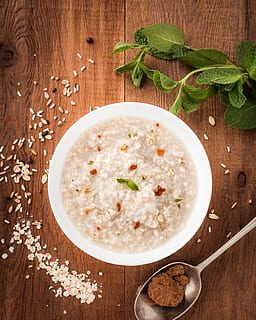
A bowlful of delicious sevai.
Fasting during the ninth month of the lunar calendar, better known as Ramadan, is among the five pillars of Islam.[1,2] Fasting is observed from early morning (sehri/suhoor) to evening (iftar) in this month. Believers abstain from drinking, eating, smoking, sexual activity, as well as taking oral medicines in this period.[2]
If you have diabetes and want to fast during this month, consult your doctor at least 6 to 8 weeks before Ramadan to ensure that your diabetes is in check.[3] Fasting is compulsory for all adults during Ramadan; however, exemptions are made for certain populations such as people who have type 1 or type 2 diabetes and are using insulin to manage it or individuals who have complications from diabetes.[2,3]
People with diabetes who plan to fast this Ramadan will get guidance from this article on how to keep their blood sugar levels under control.
Know your risks
If you have diabetes, you are at risk of developing the following complications during Ramadan fasting:
– Low blood glucose levels
– Dehydration
– High blood glucose levels (after large meals)[4]
– Diabetic ketoacidosis, a condition that causes acidic blood[2,5]
However, you can prevent abnormal blood glucose levels and the resulting complications by making certain changes to your diet.
Manage your diet
To prevent extreme changes in your blood glucose levels and to keep your blood glucose levels under control during Ramadan, you can follow these dietary changes:[2-4]
– Do not skip your sehri (early morning) meal or have it at midnight. Having a meal before sunrise will help you balance your blood glucose levels better.
– Avoid deep frying foods such as pakoras, fried dumplings or samosas. Instead, shallow fry, dry fry, grill or bake them (e.g., baked samosas).
– Oil for cooking should be limited to 1 to 2 tablespoons (for a 4-person meal).[3]
– Include a lot of vegetables, fruits and salads in your meal.[2]
– Hydrate yourself by drinking plenty of water after iftar and at sehri.[4]
– Avoid sweetened, caffeinated drinks and sugary desserts.[2] Instead, go for sugar-free and decaffeinated varieties.[3]
– Eat more of starchy foods like basmati rice, pitta bread, and chapatti at sehri as they are digested slowly.[3,4]
Important tips to keep in mind during Ramadan
Other than making changes to your diet, you can also follow these suggestions for managing your diabetes:
– Discuss with your doctor about changing the timing, dose or type of diabetes medicine during Ramadan to lower your risk of low blood glucose levels.[2]
– If you are on insulin, do not stop taking it; however, consult your doctor before your fast to check if you should change the time and dose of insulin. [4]
– Avoid doing vigorous exercises as they may increase your risk of dehydration or low blood glucose. You can instead perform light-to-moderate exercises.[2]
– Check your blood sugar level regularly; it won’t affect your fast.[2]
– Discontinue the fast if your blood glucose levels are:[2]
- Lower than 70 mg/dL or 3.9 mmol/L
- Higher than 300 mg/dL or 16.6 mmol/L
– Break the fast if you have any of the following symptoms of high or low blood sugar levels:[2]
- Frequent urination[6]
- Blurred vision[6]
- Numbness in the feet, mouth or tongue[6,7]
- Dizziness[7]
- Confusion[7]
- Sweating[7]
- Shaking[7]
– Take as much rest as you can during the day to avoid low blood glucose levels[3]
If you have any questions about managing your diabetes, do not hesitate to contact your doctor.
References:
1. Jaleel MA, Raza SA, Fathima FN, Jaleel BN. Ramadan and diabetes: As-Saum (the fasting). Indian J Endocrinol Metab. 2011 Oct;15(4):268-73. DOI: 10.4103/2230-8210.85578.
2. International Diabetes Federation. Diabetes and Ramadan [Internet]. [cited 2020 Feb 20]. Available from: https://www.idf.org/our-activities/education/diabetes-and-ramadan.html.
3. NHS Hull University Teaching Hospitals. Diabetes and Ramadan – guidance for fasting during the holy month [Internet]. [cited 2020 Feb 20]. Available from: https://www.hey.nhs.uk/patient-leaflet/diabetes-ramadan-guidance-fasting-holy-month/
4. NHS Northamptonshire Healthcare. Ramadan and diabetes [Internet]. [cited 2020 Feb 20]. Available from: https://www.nhft.nhs.uk/download.cfm?doc=docm93jijm4n7097.pdf&ver=22541
5. MedlinePlus. Diabetic ketoacidosis [Internet]. [updated 2018 Jan 16; cited 2020 Feb 20]. Available from: https://medlineplus.gov/ency/article/000320.htm
6. Cleveland Clinic. Hyperglycemia (high blood sugar) [Internet]. [updated 2017 Mar 3; cited 2020 Feb 20]. Available from: https://my.clevelandclinic.org/health/diseases/9815-hyperglycemia-high-blood-sugar
7.Cleveland Clinic. Hypoglycemia (low blood sugar) [Internet]. [updated 2017 Mar 2; cited 2020 Feb 20]. Available from: https://my.clevelandclinic.org/health/diseases/11647-hypoglycemia-low-blood-sugar.